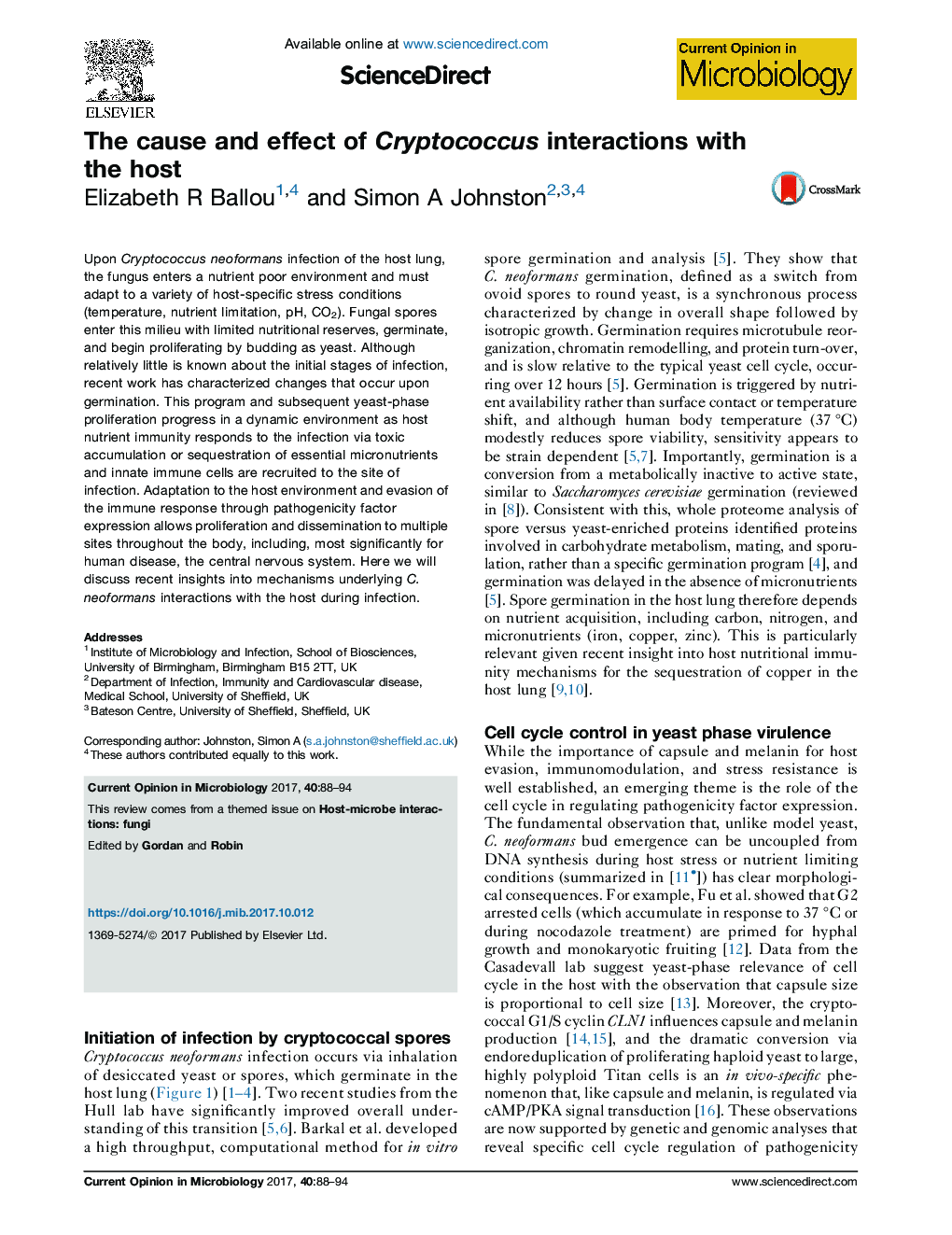| Article ID | Journal | Published Year | Pages | File Type |
|---|---|---|---|---|
| 8745115 | Current Opinion in Microbiology | 2017 | 7 Pages |
Abstract
Upon Cryptococcus neoformans infection of the host lung, the fungus enters a nutrient poor environment and must adapt to a variety of host-specific stress conditions (temperature, nutrient limitation, pH, CO2). Fungal spores enter this milieu with limited nutritional reserves, germinate, and begin proliferating by budding as yeast. Although relatively little is known about the initial stages of infection, recent work has characterized changes that occur upon germination. This program and subsequent yeast-phase proliferation progress in a dynamic environment as host nutrient immunity responds to the infection via toxic accumulation or sequestration of essential micronutrients and innate immune cells are recruited to the site of infection. Adaptation to the host environment and evasion of the immune response through pathogenicity factor expression allows proliferation and dissemination to multiple sites throughout the body, including, most significantly for human disease, the central nervous system. Here we will discuss recent insights into mechanisms underlying C. neoformans interactions with the host during infection.
Related Topics
Life Sciences
Immunology and Microbiology
Microbiology
Authors
Elizabeth R Ballou, Simon A Johnston,
